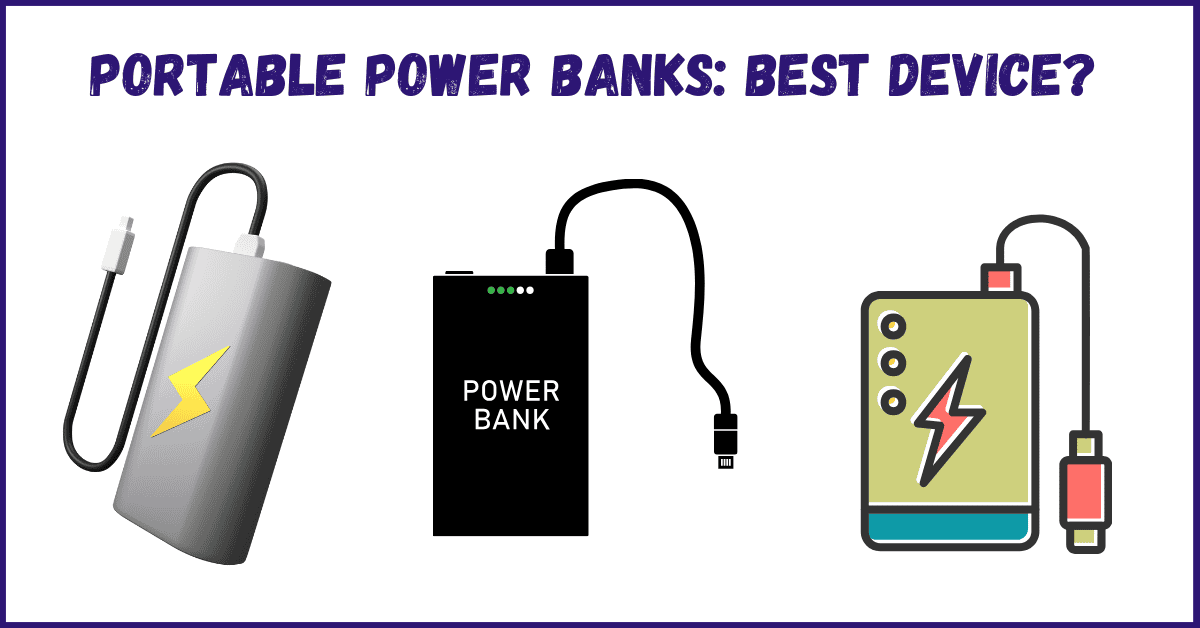In today’s fast-paced world, running out of battery on your smartphone, tablet, or laptop is a nightmare. Whether you’re traveling, attending a long event, or just stuck in a place without access to a power outlet, having a portable power bank can be a lifesaver. But with so many options available, it can be overwhelming to figure out which one is the best for your device. Should you go for a high-capacity power bank or a lightweight one? What about fast charging and compatibility with different devices? Let’s break it all down and help you choose the right power bank for your needs.
Why You Need a Power Bank
Before we dive into the details, let’s quickly understand why portable power banks have become essential. Smartphones, as powerful as they are today, still suffer from limited battery life. All those apps, background services, and high-resolution displays consume a lot of power. And let’s not forget about other devices like tablets, laptops, wireless headphones, and smartwatches. In situations where you’re on the go and can’t recharge, a power bank ensures you stay connected without interruption.
Not only do power banks offer convenience, but they also give you peace of mind. Imagine being on a road trip with your phone’s GPS running low on battery—without a portable charger, you’d be in trouble. Power banks eliminate that worry by letting you recharge whenever and wherever you need it.
Types of Power Banks
There are different types of power banks designed to meet various needs. Understanding these categories can help you narrow down your choices:
- High-Capacity Power Banks (10,000mAh to 30,000mAh or more)
These power banks are ideal for people who need to charge multiple devices or larger gadgets like tablets and laptops. The higher the capacity, the more charge cycles you can get. For instance, a 20,000mAh power bank can fully charge a smartphone four to five times or a tablet twice. However, the downside is that these power banks tend to be bulkier and heavier. - Compact and Lightweight Power Banks (5,000mAh to 10,000mAh)
If you prioritize portability, compact power banks are a great option. They’re easy to carry in your pocket or small bag and can provide one or two full charges for your phone. These are perfect for short trips or everyday use when you don’t want to carry extra weight. Keep in mind, though, that they may not be suitable for charging larger devices like laptops. - Solar Power Banks
For outdoor enthusiasts, solar power banks offer a unique advantage. Equipped with solar panels, these power banks can recharge themselves using sunlight. They’re great for camping, hiking, or emergency situations where access to electricity is limited. However, solar charging can be slow, so these power banks usually also come with regular USB charging as a backup. - Wireless Power Banks
With the rise of wireless charging technology, many power banks now support Qi wireless charging. These allow you to charge your phone by simply placing it on the surface of the power bank. This is super convenient if you hate dealing with cables. However, keep in mind that wireless charging is usually slower than wired charging.
Key Features to Look For
When choosing a power bank, it’s important to consider several key features to ensure compatibility and efficiency. Here’s what you should keep an eye on:
- Battery Capacity (mAh)
The capacity of a power bank is measured in milliampere-hours (mAh). The higher the number, the more power the bank can store. For example, if your phone has a 4,000mAh battery, a 10,000mAh power bank can theoretically charge it around 2.5 times. However, keep in mind that some power is lost during the charging process, so you won’t get the full capacity in practice. - Output Ports and Compatibility
Make sure the power bank has the right types of ports for your devices. Most modern power banks offer multiple USB-A and USB-C ports, allowing you to charge multiple devices simultaneously. USB-C is particularly important for newer smartphones, tablets, and laptops, as it supports fast charging and data transfer. - Fast Charging
If you’re always in a hurry, fast charging is a must-have feature. Look for power banks that support standards like Qualcomm Quick Charge, USB Power Delivery (PD), or Apple’s Fast Charge. These technologies can significantly reduce charging time, often recharging your device to 50% in just 30 minutes. - Build Quality and Safety Features
A good power bank should be built to last. Look for models made with durable materials and protective features like overcharge protection, short-circuit protection, and temperature control. Cheaper, poorly-made power banks can pose safety risks, including overheating or even exploding in extreme cases. - Portability and Design
Think about how you’ll be carrying the power bank. If you’re a frequent traveler, you’ll want something lightweight and compact. On the other hand, if you need a high-capacity power bank for long trips, you might have to compromise on size. Some power banks also come with extra features like built-in LED flashlights or digital battery level displays.
Top Power Bank Recommendations
To help you get started, here are some of the best power banks currently available:
- Anker PowerCore 20100
Known for its reliability and fast charging, the Anker PowerCore 20100 offers a solid 20,100mAh capacity. It supports both USB-C and USB-A, making it compatible with a wide range of devices. Despite its high capacity, it’s surprisingly lightweight and easy to carry. - RAVPower 30,000mAh
If you need serious power, the RAVPower 30,000mAh power bank has you covered. It can charge multiple devices simultaneously and supports USB-C Power Delivery for fast laptop charging. This is perfect for tech enthusiasts who carry multiple gadgets. - Xiaomi Mi 10,000mAh Power Bank
For budget-conscious users, the Xiaomi Mi power bank offers excellent value. It’s compact, affordable, and supports both fast charging and USB-C. It’s a great choice for everyday use and short trips. - Goal Zero Venture 70
Outdoor adventurers will appreciate the rugged design of the Goal Zero Venture 70. It’s waterproof, shockproof, and comes with built-in solar charging capabilities. It’s ideal for camping or emergency situations where access to electricity is limited. - Belkin BoostCharge Wireless Power Bank
If you’re a fan of wireless charging, the Belkin BoostCharge is worth considering. It offers both wireless and wired charging options, making it versatile for a variety of devices. The sleek design also makes it a stylish accessory for on-the-go charging.
Final Thoughts
Choosing the right power bank comes down to your lifestyle and device needs. If you’re constantly on the move and carry multiple devices, a high-capacity model with fast charging is a smart investment. For casual users, a compact and lightweight power bank might be more practical. Either way, having a portable charger ensures you never have to worry about running out of battery at the worst possible moment. With the right power bank by your side, you’ll stay connected and powered up no matter where life takes you.









